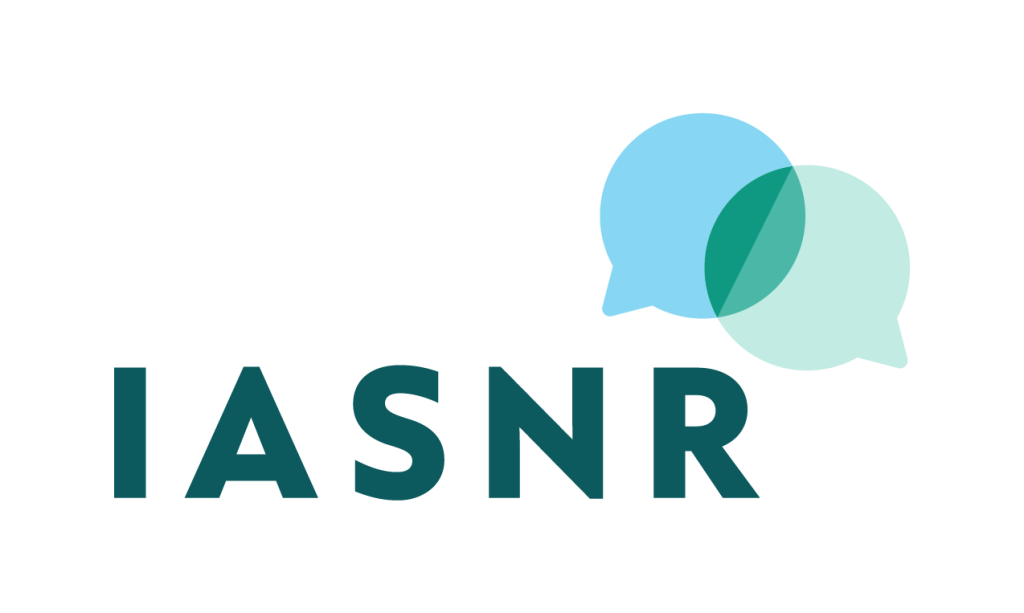Best Student Paper Award Recipients
2024 IASNR Conference
Best paper submitted by a Master’s student:

“Understanding the Role of Food Systems in Perceptions of Subjective Wellbeing: A Case Study in Washington’s Upper Yakima River Basin”
As bodies of research on both subjective wellbeing and food systems continue to grow, qualitative assessments linking the two areas are necessary for understanding their interplay. This research engages with data from 121 interviews across six different communities in two counties in central Washington linking subjective wellbeing to community experiences within food systems. Analyzing participant perspectives illuminates important insights into food access and the impacts of agriculture on both individual and community wellbeing. Findings suggest that variations in food access between and within communities often disproportionately hinder the food access of people in rural places, lower income demographics, and people without access to personal transportation. Additionally, changes in agriculture over time have put long-standing agrarian livelihoods under threat. In particular, we find that as ownership structures continue to shift, some community members believe they are less likely to reap the economic and cultural benefits that have historically resulted from a close relationship with agriculture. However, agriculture is also seen by some as providing a valuable source of jobs and economic security in several communities of focus, suggesting a complex variance in community perspectives. To assess the implications of these findings, we draw upon La Via Campesina’s food sovereignty framework. Taking these qualitative perspectives into consideration, we conclude with a forward-looking discussion of potential food system reform suggests potential improvements for increased equity.
Best paper submitted by a Undergraduate student:

“From Canopy to Clearing: Examining Deforestation Trends in Indonesia’s Moratorium Era”
For over a decade, Indonesia’s land-use-intensive economy has been aiming to curtail its deforestation and resulting carbon emissions in line with UN REDD+ standards. I evaluate the anticipatory and post-implementation effects of the 2011 Indonesian moratorium on licenses for oil palm, logging, and timber in peatland and primary forests. I run a time and entity-fixed effect difference-in-difference model for the entire period of the program, from 2011 to 2021. I find no evidence that actors shifted their patterns of deforestation after the announcement of the policy and before its implementation, which provides insights into future iterations of forest conservation initiatives.
2023 IASNR Conference
Best paper submitted by a Doctoral student:

“Bang For Your Buck!: Online Hunting Marketplaces and Emerging Economies of Access”
This paper identifies Online Hunting Marketplaces (OHMs) as a suite of emerging digital platforms that facilitate the sale of private land hunting opportunities. Over the last decade, numerous companies, like LandTrust and HLRBO (Hunting Land Rentals by Owner), which offer pay-for-hunt opportunities have emerged. OHMs are playing an increasingly important role in mediating hunting access on private lands, specifically by creating online infrastructures that facilitate the formation of access relations while also collecting rent from platform users. In this paper, I use Ribot and Peluso’s (2009 ) access framework to discuss existing forms of access relations and the ways that OHMs reconfigure and reroute these relations through an emergent digital landscape. I argue that in doing so, OHMs are platforming access relations, positioning themselves as new mediators between hunters and private landowners, and extracting value in the form of rent. Using a qualitative analysis of 30 US-based OHMs, I outline some of the prominent features, business models, and rent mechanisms that are visible in the current OHM landscape. Building on this qualitative analysis, I discuss the potential consequences of OHMs for the social and political dynamics of hunting access as well as present further lines of inquiry in this domain.
Best paper submitted by a Master’s student:

“Assessing Livelihood Resilience to Climate Variability by Land Tenure Status of Pastoralists in the Chaco Salteño”
The Chaco Salteño of Argentina is a global hotspot of land conflict and climate change pressures that, together, threaten the livelihoods of rural pastoralists. This study was motivated by an interest in understanding how smallholding pastoralists in the area, many of whom lack formal title to the lands they utilize, adapt and anticipate to shocks and stressors for more resilient livelihoods. We analyze the mechanisms controlling access to resources with potential to build resiliency in the face of climate, political, and other socio-economic disturbances and consider adaptive responses in terms of both the ecological and institutional contexts within which these pastoralists operate. Formalized land title documents and communal organizations are identified as primary mechanisms for securing resource access and explored to better understand how, why, and to what extent they are employed by pastoralists in the Chaco Salteño. A qualitative methods approach was utilized to investigate the role of varied mechanisms in confronting a changing climate in the context of land tenure insecurity. We find that adaptive mechanisms not only vary greatly in their feasibility to attain, but also in the efficiency, reliability, and longevity of resource benefits. Findings from this study contribute to efforts to advance sustainable development by contextualizing the importance of varied strategies in supporting resilient livelihoods.
Best paper submitted by a Undergraduate student:

“Exploring Nature Dose Attainment across Racial Groups in Urban Parks and Trails: A Case of Metropolitan Council Parks & Trail”
Research supports nature exposure as a medium to attain significant mental and physical health benefits, where one’s overall well-being can be improved by reaching a weekly, 120 minute or greater nature dose threshold. Yet, Black, Indigenous, and People of Color (BIPOC) face greater constraints to nature-based leisure, amidst a growing urban disconnect with nature. A secondary analysis of park and trail visitor data (n = 3209) from the Metropolitan Council across the Twin Cities, Minnesota, explores how nature dosage attainment varies across racial groups (BIPOC-aggregate, Asian, Black, White). Results reveal that nature dose attainment was significantly higher among White respondents compared to BIPOC respondents, except for between the BIPOC-aggregate at parks. Notably, nature dose attainment was rather low for all respondents, as the highest rate of attainment was 25% among White respondents. Opportunities exist for park managers to address leisure constraints and to better understand why benefit attainment was low. Future studies can seek primary data and conduct further analysis to better contextualize how socio-demographic stratification and/or specific activities impact nature dosage.
2022 IASNR Conference
Best paper submitted by a Doctoral student:

“Evaluating Agricultural Producers’ Motivations to Create Local Collaborative Water Governance Institutions in Kansas”
This research focuses on the motivations of agricultural producers in Kansas to participate in a bottom-up local collaborative governance institution aimed at preserving dwindling groundwater resources essential to irrigation. The Sheridan 6 Local Enhanced Management Area (LEMA) that Kansas producers initiated resulted in a 20% reduction in the volume of water each permit holder can annually withdraw. While previous research has focused on the environmental impacts of the LEMA – finding that the rate of groundwater depletion has indeed been reduced since adoption – no study has evaluated why producers decided to create the LEMA, nor the impacts that adoption has had on individual producers and the farming community. From interviews with producers in the LEMA, we find several reasons for participation, including the desire to minimize regulatory oversight, a sense of identity and place attachment built around farming, and the desire to give future generations the option of inheriting farming operations. Additionally, we find that producers have been able to effectively adapt to a smaller water budget by altering the types of crops grown, watering schedules, and the adoption of technologies like soil moisture monitors. Results from this study are important for other regions facing the threat of groundwater scarcity because it shows that producers are able to self-organize and adopt policies that preserve water resources while maintaining their ability to continue profitable farming operations.
Best paper submitted by a Master’s student:

“‘Smells fishy’: A literature review in regards to sense of place salience in community acceptance of closed net-pen aquaculture in Frenchman Bay, Maine”
A proposed closed net-pen Atlantic salmon (Salmo salar) project has caused community contention in the towns of Bar Harbor and Gouldsboro, Maine. As global population rises, demand for protein, particularly seafood, is increasing as well. As more projects marketed as sustainable solutions are proposed, understanding community perceptions, and therefore reactions, increases in importance and salience. A review of existing sense of place (SoP) and aquaculture siting literature suggests that siting aquaculture projects raises concerns from traditional waterfront users regarding continued access and water quality and concerns from recreationists and property owners regarding aesthetics.
These concerns can lead to community acceptance or rejection of the proposed project, which in turn could create more accessible or challenging pathways to project permitting and realization for industry participants. We suggest a study or studies which use Frenchman Bay or related cases take place in order to research and better understand community response to proposed aquaculture projects in traditionally shared waters, with a focus on histories of gentrification.
2021 IASNR Conference
Best paper submitted by a Doctoral student:

“Soldiers in the Garden: Managing the U.S. Military Training Landscape”
Despite a reputation for destruction, militaries across the world may maintain important biological natural resources that are key to achieving global biodiversity conservation goals. On lands used by militaries for soldier training or weapons testing, numerous rare and endangered species can be found. In the United States, the Department of Defense hosts a considerably higher density of federally listed threatened and endangered species than the other federal land management agencies. The study presented here explores the relationship between the Department of Defense (DoD) and the species it hosts by considering the military training landscape as perceived by DoD employees who manage the training lands. To construct a more complete understanding of the imagined ideal training landscape that drives management decisions, I interviewed land managers at six DoD training installations.
I found that the underlying beliefs that managers have about training, war, and nature influence their view of the ideal training landscape. I describe this ideal landscape in detail through the metaphor of the medieval garden. These beliefs have indirect yet tangible impacts within the environment as the management practices implemented to bring about the ideal training landscape contribute to achieving conservation objectives and promoting threatened and endangered species on military land.
Best paper submitted by a Master’s student:

“Do Rising Flows Lift All Boats?: Ecosystem Service Elasticity in the Dolores River Watershed”
In the Colorado River Basin, annual variability and climate change projections complicate transboundary planning, management, and the allocation of water resources. As dynamic pressures alter this complex watershed, individual stakeholders make sense of these changes and form context-dependent mental models of the ecosystem services afforded. We characterized recreational and conservation stakeholder perceptions (n=40) of the relative (in)elasticity of ecosystem services afforded by the Dolores River, a tributary of the Colorado River, to inform ongoing regional planning.
Findings indicate perceived vulnerability of water resources to climate change, an increased value ascribed to cultural services (i.e., recreation) due to scarcity, and the political prominence of provisioning services. Improvement to the allocation of supporting services (i.e., habitat) is, in part, dependent on aligning ecosystem management with flow regimes through collaborative management and adaptive water governance in the watershed on a multiyear scale.
2020 IASNR Conference
Best paper submitted by a Doctoral student:
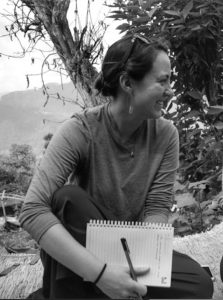
“Managing wild emotions: The affective and emotional labor of wildlife managers in the Western US”
Securing hunting access to private land for managing game species is an essential component of wildlife management in the Western US and depends on a set of institutional norms and cooperative practices between hunters, private landowners, and wildlife agencies. In rural agricultural landscapes where changes in demographics and land use accompany shifts private land use and access, wildlife managers can have difficulty controlling the density and distribution of wildlife across the landscape. The result is often intense conflict between individuals seeking hunting access for sport, agricultural producers fearing economic loss from game damage and disease, and landowners harboring large populations of game species on private property. Drawing from four years of ethnographic engagement with wildlife managers in rural working landscapes of Wyoming and Montana, I argue that a requisite feature of managing wildlife on private lands has become managing the private landowners themselves, and more specifically their fear, anger, and frustration with institutional structures.
To assuage environmental conflict, wildlife managers use practices and strategies to deliberately modify and control the emotional experiences of private landowners. I code this labor as both emotional (Hochschild 1979) and affective (Hardt and Negri 2000). Thinking through the affective and emotional labor of wildlife managers illuminates enduring limitations for wildlife governance in the Western US related to the power of landowners to control access to private wildlife habitat. At the same time, the potential for wildlife managers to generate and build alternative subjectivities and ways of being amongst landowners, wildlife, and agents of the state suggests that relational approaches are a means to reconcile challenges related to wildlife conservation, rural livelihoods, and issues of access.
Best paper submitted by a Master’s student:
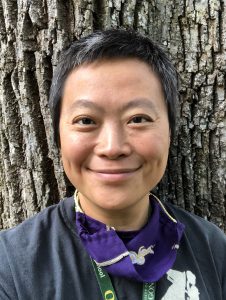
“We Have Nothing”: Coal Miners’ Perceptions of Air Pollution in China
Coal directly impacts climate change in two primary ways: 1. Extracting coal releases methane, a known greenhouse gas, into the atmosphere; and, 2. Burning coal as fuel increases the amount of carbon dioxide in the air. How do coal workers perceive air pollution produced by their own industry? To answer this question, I interviewed coal mining company employees in a coal mining city in China. My findings present a paradox:
Although miners have identified definite sources of air pollution, these same miners nevertheless deny the existence of air pollution. My analysis of the miners’ employment experience reveals that, in order to collectively avoid the mention of any air quality issues, the miners must avoid a direct confrontation with authority – that same authority that has forged a formulated acquiescence among miners at work.
Acknowledging air quality issues could disturb the miners’ employment stability by creating anxiety and chaos, lessening their ontological security.
Best paper submitted by a Undergraduate student:

Development in Dubai: Exemplar of Ecological Modernization or Manifestation of the Treadmill of Production?
In 2006, the World Wildlife Fund publicly reported that the United Arab Emirates (UAE) had the highest ecological footprint of any country in the world. This pronouncement inspired
the government of Dubai (the most populous city in the UAE) to make efforts to improve their ecological impact, including notable reductions in per capita carbon dioxide emissions. Is this evidence of what many scholars characterize as Ecological Modernization? Dubai is an exemplar of modernization in many ways, rapidly developing from a desert trade port in the 1950s to an international commercial hub and destination for luxury tourism in 2020. However, the Ecological Modernization proposition is that environmental gains are market innovations rather than top-down government directives, as seen in Dubai. Furthermore, as a contemporary monarchy, Dubai does not perfectly fit Ecological Modernization theory. Alternatively, are the environmental improvements that have emerged in the most recent stage of Dubai’s rapid modernization simply the product of what other scholars define as the Treadmill of Production?
This paper investigates the relationship between Dubai’s economic expansion and its carbon dioxide emissions to test the applicability of Ecological Modernization and/or Treadmill of Production theories. Fourinear regressions are employed to examine the relationship between GDP and carbon emissions. Results provide partial support for both theories. For instance, evidence of a potential Kuznets curve was found between change in carbon dioxide emissions and GDP per capita. However, changes in GDP per capita is still strongly correlated with increases in carbon dioxide emissions per capita. These and other conflicting results suggest that neither theory fits this context perfectly. Although there is evidence that Dubai is fulfilling its long-term goals of environmental sustainability and economic growth, efforts to attract tourists and investors ultimately serves to increase the emirate’s impact. These results also provide insights into conducting research on this topic in different, non-western contexts and provide some directions for future research that further elaborate the utility of these environmental sociological theories.
2019 IASNR Conference
Best paper submitted by a Doctoral student:
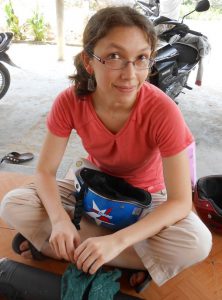
“Enterprises for Conservation and Development: Lessons learned from community-forest enterprises in Guatemala’s Maya Biosphere Reserve”
This paper contributes to literature on the relationship between governance and successful community-based initiatives through investigating governance at the scale of the community forest enterprise (CFE). The goal of this research is to investigate and understand factors that influence CFE governance through a comparative cross-case analysis of CFEs operating in Guatemala’s Maya Biosphere Reserve (MBR).
Best paper submitted by a Master’s student:

“From Extractive to Nonconsumptive Natural Resource Dependency: Transitions, Traditions, and Traps in Three Southeastern Utah Towns”
In this paper, I use three ex-uranium communities in southeastern Utah as comparative case studies to demonstrate how nonconsumptive natural resource dependency (NRD) may tend to reproduce the vulnerabilities that characterize extractive N RD. I present the histories and contexts of Moab, Monticello, and Blanding, Utah to provide an overview of the impact of extractive NRD on each community and their varying attempts to transition away from uranium economies, then introduce NRD concepts such as internal colonialism, extralocal control, and fictitious commodification to evaluate the impact of the transition to nonconsumptive NRD on each community. These discussions include important implications and applicability for all natural resource dependent communities that are currently facing the slow death of their traditional extraction economies and are grappling with transitions to different economic models, a trend that currently defines many rural communities across the American West.
2018 IASNR Conference
Best paper submitted by a Doctoral student:

“Experiences with the Nighttime Environment: How Darkness Affects Human Relationships with Nature”
Through artificial lighting, humanity has undertaken a decades-long, global initiative to conquer the nighttime environment. Despite the Global North’s overwhelming success in this endeavor, limited areas of natural darkness persist, and this darkness is increasingly valued as a natural resource. Through interviews and participant observation of guided nighttime interpretive programs, I examine how program guides ‘produce,’ and how program participants ‘receive,’ experiences in natural darkness. My data illustrates how darkness facilitates a different sensory encounter with nature, as well as affective responses including fear and awe. I argue that darkness challenges our sense of domination over the rest of nature and that nighttime recreational experiences can introduce greater humility into human-environment relationships. Therefore, nighttime interpretive programs should become valued and essential work for national, regional, and local parks. Finally, I extend a call to fellow environmental social scientists to join me in studying the night—a largely neglected temporal dimension of nature—including how darkness impacts our behaviors, values, and the meanings we attach to the natural world.
2017 IASNR Conference
Best paper submitted by a Doctoral student:

“Caffeine Demonstrates Anthropogenic E. coli: Drives Policy Change”
In 2006 Emigration Creek in Salt Lake County Utah was placed on the United States Clean Water Act list of Impaired Waters for being contaminated for Escherichia coli (E. coli). Since there are no active point sources in that section of Emigration Creek the contamination is classified as a nonpoint source. The E. coli contamination is likely attributed to failing septic systems leaking raw sewage into the waterbody. However, many residents and entities still attribute the source of E. coli to wildlife and dogs in the canyon. As a result, residents and policy makers are hesitant to address and proceed with implementing a solution to the many failing septic systems.
This interdisciplinary paper demonstrates the use of science to drive policy implementation. Utilizing a linear regression analysis this study finds that caffeine has a relationship to flow (Q) in the creek indicating the source of E. coli is human caused. This correlates to the seasonality of the water quality impairment. Using Kingdon’s Multiple Streams framework, this study analyzes the potential for public policy implementation related to the failing septic systems, including the problem stream, policy stream, and political stream. This paper hypothesizes the identification of caffeine in the water demonstrates an anthropogenic source of pollution thus driving policy change via a well-timed policy window.
2016 IASNR Conference
Best paper submitted by a Doctoral student:
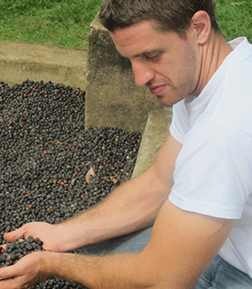
“Legume-Cereal Intercropping in Central Malawi–Determinants of Practice”
In Malawi, increased population growth has reduced opportunities for farmers to expand operations and cultivate new areas of land. The country’s primary farming population is comprised of smallholders (cultivating less than two hectares), many of whom cultivate cereals (e.g., maize) as a monoculture. The repeated practice of cultivating cereals can lead to soil erosion and fertility-loss. Intercropping cereals with legumes has widely been promoted to smallholders. The intensified practice has shown to sustain crop productivity without undermining soil fertility. Unfortunately, the number of practitioners has remained low countrywide. To elucidate drivers behind intercropping, the following study used multiple logistic regression to analyze 2013 household survey data from Central Malawi.
Best paper submitted by a Master’s student:

“Identifying Social Norms in the Context of Wetland Conservation on Agricultural Lands”
The Canadian Prairie Provinces are home to an extensive area of North America’s wetlands, which have been continuously drained to make way for farmland, urban construction, and other human development. The development of new wetland management policies has created the opportunity to test market-mechanisms, such as incentive programs, as a tool for wetland restoration.
Social and cultural factors, such as social norms, impacting participation in these programs are relatively unstudied. Using a sample of rural landowners (n=165) across Alberta, Manitoba, and Saskatchewan, this study explores the existence of social norms relating to wetland restoration on productive land. We were interested in whether different types of norms can be identified, and how these norms relate to other values and beliefs. As an exploratory study, our paper proposes that different types of social norms exist surrounding wetland drainage and that these measures can be used to better understand environmental behaviour in conservation programs on productive agricultural land. We include these norm constructs in a model of environmental behaviour with a measure of values, beliefs, and participation to investigate the role of norms in conservation program participation. Our results indicate that norms are related directly to values and beliefs and are a significant factor in behaviour.
